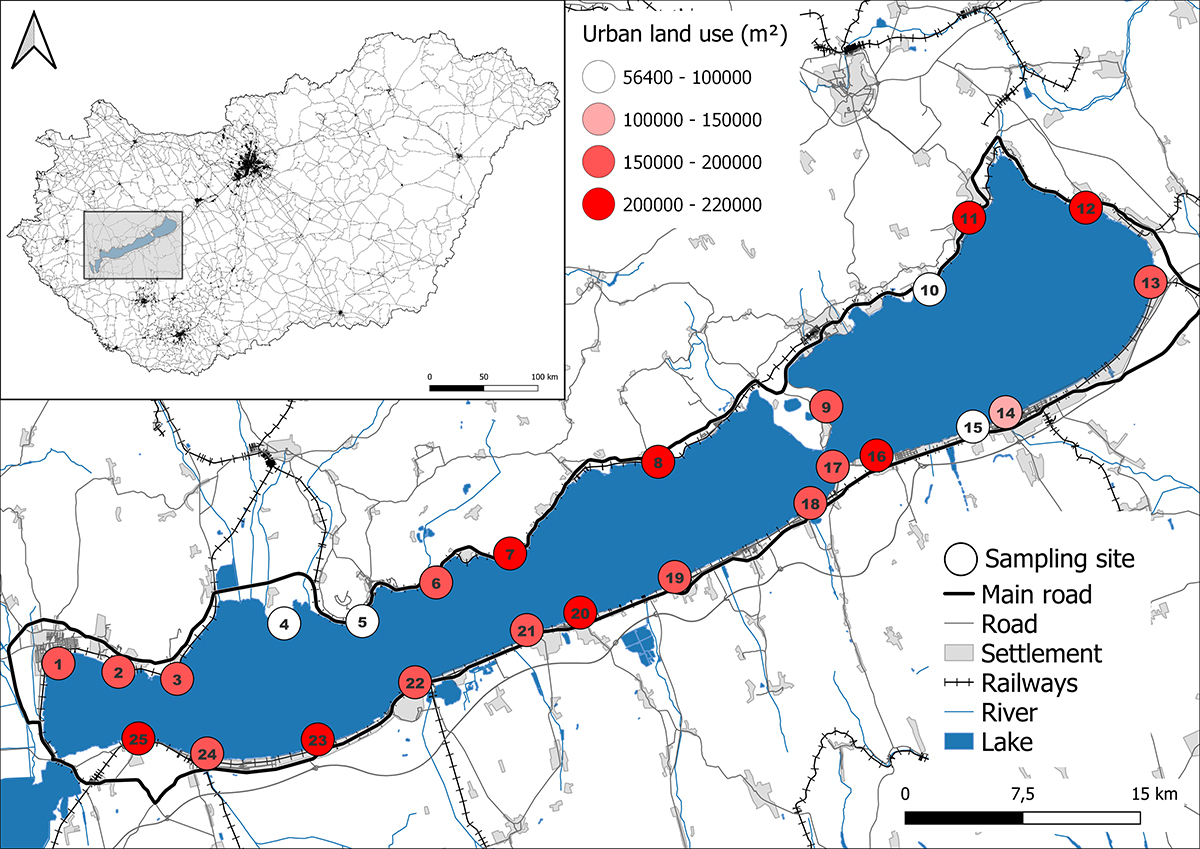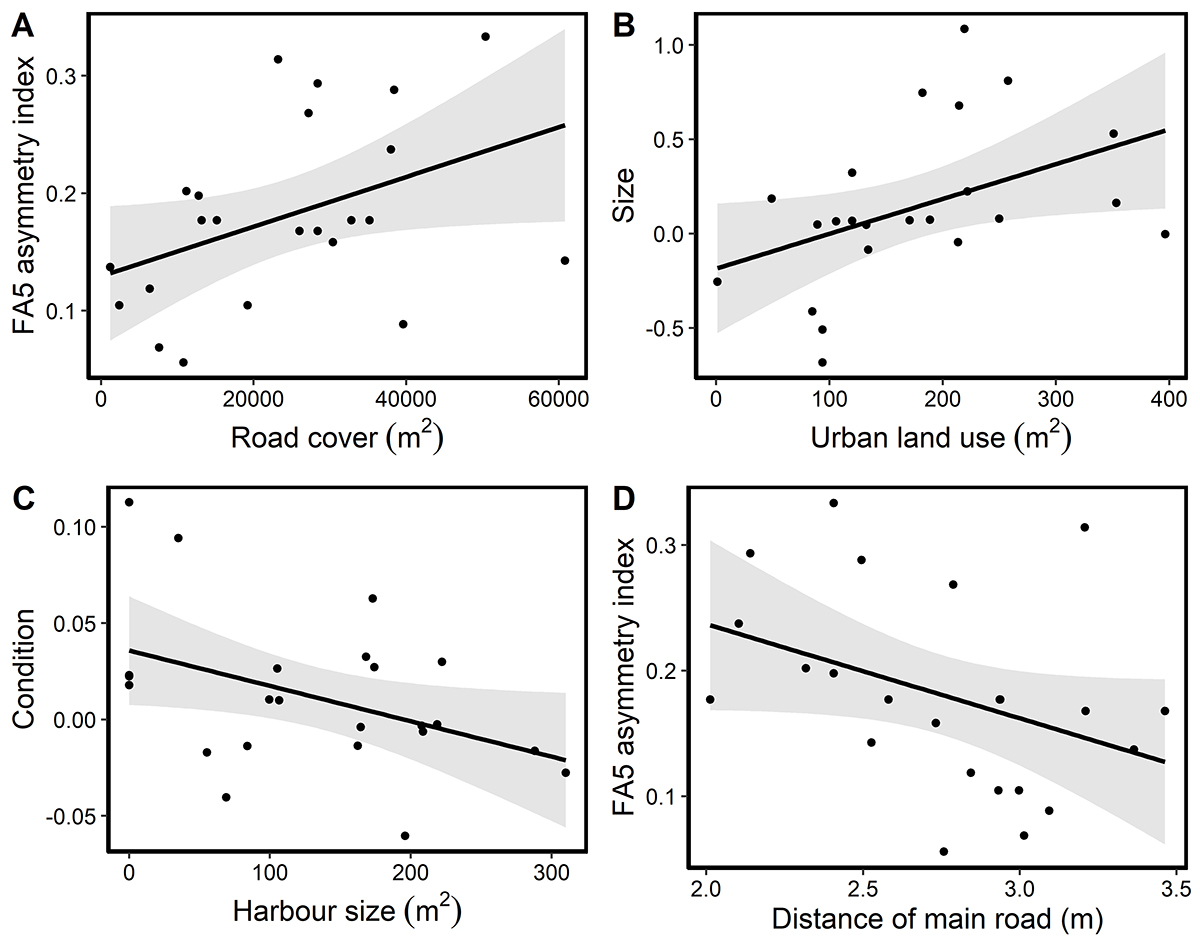HUN-REN BLRI researchers investigated the effects of artificial lakeside habitats on the development of dice snakes
Researchers from the HUN-REN Balaton Limnological Research Institute (HUN-REN BLRI) examined the effects of urbanisation typical of the shores of Lake Balaton and artificial lakeside habitats on the developmental stability, size and body condition of dice snakes (Natrix tessellata) living in artificial lakeside habitats. In 2022, researchers recorded the morphological characteristics of captured individuals six times at twenty-five locations along the lake's shore. According to the paper published in the scientific journal Ecological Indicators, the artificial paving along the shore provides suitable habitat for dice snakes, but the intensive human disturbance associated with harbours and boat traffic has a negative impact on their condition and the proximity and the density of roads have a negative effect on their individual development.
Due to the continuous expansion of settlements, natural habitats are shrinking, forcing some species into urban environments where they must face completely different conditions than before, which can affect their body size, condition, and individual development.
The developmental instability triggered by environmental factors can be estimated using the measure of so-called fluctuating asymmetry, which indicates deviations from perfect symmetry in a random direction of some symmetric characteristic. This asymmetry can develop in organisms during individual development due to environmental disturbances – such as pollution, temperature deviations from the average, etc. – and its magnitude can indicate the extent of disturbance affecting individuals.

Fig. 1. Map of Hungary (top-left) and the study area (bottom-right) showing the 25 sampling locations along the shoreline of Lake Balaton, Hungary. The colour coding of the sampling sites represents the degree of urbanization based on the area (m2) of urban land use in the buffer zones
During the survey, researchers recorded the morphological characteristics necessary for examination - including body length, body mass, and head dimensions - for each animal. They used these characteristics to assess the condition and body size of the specimens. Additionally, they counted the number of scales in front of and behind the eyes, as well as the quantity of upper and lower labial scales on both sides of the individuals, based on which they estimated the fluctuating asymmetry. Concurrently, researchers surveyed a number of environmental variables – such as the size of built-up urban areas, the extent of reed beds, road surface area, distance from roads 7 and 71, area of the rip-rap coastal protection structure, harbour dimensions, and vegetation coverage – to characterize the urban environment.

Fig. 2. The relationships between the area of road cover and the level of asymmetry (A), the area of urban land use and the body size of snakes (B), harbor size and the condition of snakes (C) and the distance of main road and the level of asymmetry (D).
According to the researchers' findings, in habitats where road surface area is larger or closer to the main road encircling Lake Balaton, dice snakes exhibited more asymmetrical characteristics. It is presumed that pollutants from vehicular traffic in these habitats may cause developmental abnormalities, resulting in a high prevalence of asymmetrical individuals. The research also reveals that the size of harbours has a negative impact on the physical and health condition of the animals: Dice snakes living in larger harbours have worse condition than their counterparts observed in smaller harbours. This correlation is presumably attributed to the intensive human disturbance and boat traffic characteristic of harbours. Furthermore, it can be stated that the urban environment has a positive effect on the animals' body size, as dice snakes in these areas are capable of growing larger.

